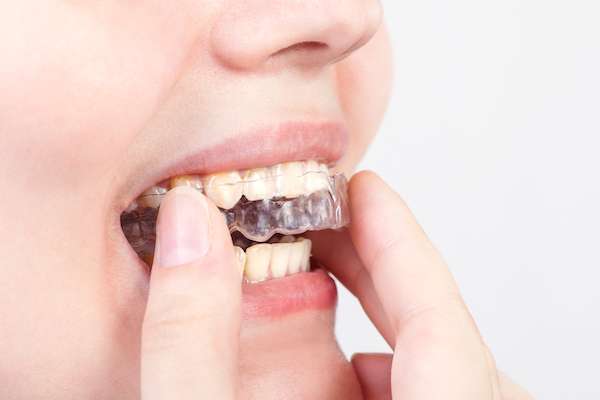 While researching options for teeth straightening, many patients consider the use of clear braces instead of traditional metal braces. There are pros and cons to each option. Before making a decision, learning more about the differences between clear braces options and traditional teeth straightening can help patients decide which route works for their circumstances.
While researching options for teeth straightening, many patients consider the use of clear braces instead of traditional metal braces. There are pros and cons to each option. Before making a decision, learning more about the differences between clear braces options and traditional teeth straightening can help patients decide which route works for their circumstances.
5 questions about clear braces answered
Traditional metal braces are not the only option for teeth straightening for most individuals. Getting clear braces is an option that provides more discretion and is especially popular with teenagers and adults for this reason. Getting the answers to some of the most frequently asked questions can help expedite the decision-making process.
1. What are the different types of clear braces?
Clear braces come in a few different forms. Some are attached and adjusted the same way as traditional braces but are constructed with clear or tooth-colored materials to blend in better with the natural teeth. Other types of clear braces are removable tray systems that are virtually invisible while being worn.
2. What are the benefits of clear braces?
The primary benefit of clear braces over metal braces is a higher level of discretion. Ceramic braces are adjusted and tightened in the same way as traditional braces but are less noticeable, especially from a distance. Tray systems or invisible braces offer further advantages. The plastic aligners are removable while eating or for special events such as a photography session. During everyday wear, they are difficult to spot and nearly invisible from a distance.
3. What are the limitations of wearing clear braces?
Ceramic braces are strong and can withstand the tension required to move the teeth into position but are not quite as strong as metal braces. Clear options can crack or chip, so some dentists recommend metal braces for those who play contact sports or are at risk of being hit in the mouth. Tray systems also have some limitations on what they can effectively treat. Some patients are not good candidates for a tray system due to the type of alignment issue.
4. How are clear braces maintained?
Braces that are tooth-colored or clear have the potential to get stained, so when wearing them it is important to avoid staining foods and beverages. Oral hygiene is important for all types of braces, and clear ones are no exception. Tray systems need to be removed when eating and the teeth must be cleaned before replacing the tray.
5. Why doesn’t everyone get clear braces instead of metal ones?
Metal braces may still be recommended for patients who need major adjustments because metal brackets can apply the most amount of force. Younger patients who may be rough on the braces may also do better with the traditional version. Other considerations include time and budgetary constraints.
Check out what others are saying about our dental services on Yelp: Clear Braces in San Antonio, TX.
Conclusion
Getting braces involves a commitment, so it is important for patients to consider all options before moving forward. Those considering clear braces can learn more about the different options by consulting with a dentist to get the answers to further questions.
Request an appointment or call Evans Family Dentistry at 210-503-7043 for an appointment in our San Antonio office.
Related Posts
Seeking emergency dentistry treatments can help you get relief. It can also help you regain your normal dental functions and self-esteem. The dentist can share dental care tips that you may not know or have forgotten about. If you want to know more about the dental advice that emergency dentistry can provide, here are the…
Emergency dentistry can provide immediate relief from the discomfort that you may be experiencing. While waiting for your turn, you can do a few things to help your situation. Knowing what to do can prepare your teeth and gums for urgent treatment.If a patient wants to know what they can do while waiting to see…
Restorative treatments encompass a broad range of dental procedures designed to help patients recover oral health and self-esteem via improved aesthetics. Patients who have suffered oral damage due to tooth decay, gum disease, or trauma might benefit from restorative therapy. Visiting the emergency dentistry office as soon as possible is advisable to restore oral health…
